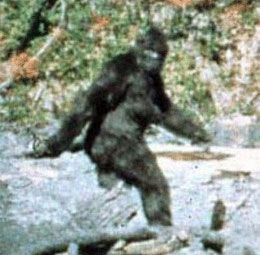
Source: Roger Patterson’s Sasquatch, History Link
Look at the photo below. Do you believe what you see?

Source: Roger Patterson’s Sasquatch, History Link
On October 20, 1976, Roger Patterson and Robert Gimlin set out on horseback to explore the northern California wilderness and search for Bigfoot. Using a 16mm handheld movie camera, they shot the following footage.
Source: Roger Patterson Bigfoot footage, Dzvid Walker 1964
Many scientists throughout the world continue to remain divided on the authenticity of the film.
When we are asked to evaluate scientific explanations, we have to evaluate or judge the reliability of what we hear and see. We have to use critical thinking to evaluate explanations. Critical thinking means combining what you already know with new facts or observations and deciding if you agree or not.
Evaluating scientific explanations involves two steps.
![]() Click on each step to learn more.
Click on each step to learn more.